A sturdy set of tire chains is something every vehicle owner should consider carrying along during the winter months. Some states require drivers to have them on hand in case weather makes roads difficult or dangerous for driving. Tire chains bite into heavy snow, slush, and ice to give your rig extra traction and help ensure safe arrival at your destination.
Tire chains are available for many different tire sizes and specific travel needs. Be sure to check your vehicle’s instruction manual for recommendations regarding the use of snow chains.
Know your tire size
One tire chain may fit multiple tire sizes. To figure out your tire size, locate the letter/number combination on the tire’s sidewall. The first three-digit number refers to the tire width in millimeters (measured from one sidewall to the other). The two-digit number immediately after the slash mark is the aspect ratio percentage, calculated by dividing a tire’s height off the rim by its width.
For example, a tire branded with 225/75 has a width of 225 mm, while the tire’s height is 75 percent of its width.
Consider your application
Are you part of the lumber industry or a utility company replacing downed power lines through hills and rough terrain? Or, more commonly, a trucker or highway service worker navigating hard-surface roads and steep mountain passes? Do you have all-season — year-round — radial tires, or those designed for snow/mud?
Snow tire shoulders are squarer and have a different tread than all-weather versions. Therefore, they require a longer chain to cover the added surface area. Also, how often do you plan to mount the chains — after every snowfall or only when necessary? Do you require single chains, or duals?
We offer two styles of snow chains from Pewag, a leader in chain manufacturing. Both meet or exceed DOT and National Association of Chain Manufacturers (NACM) regulations: -
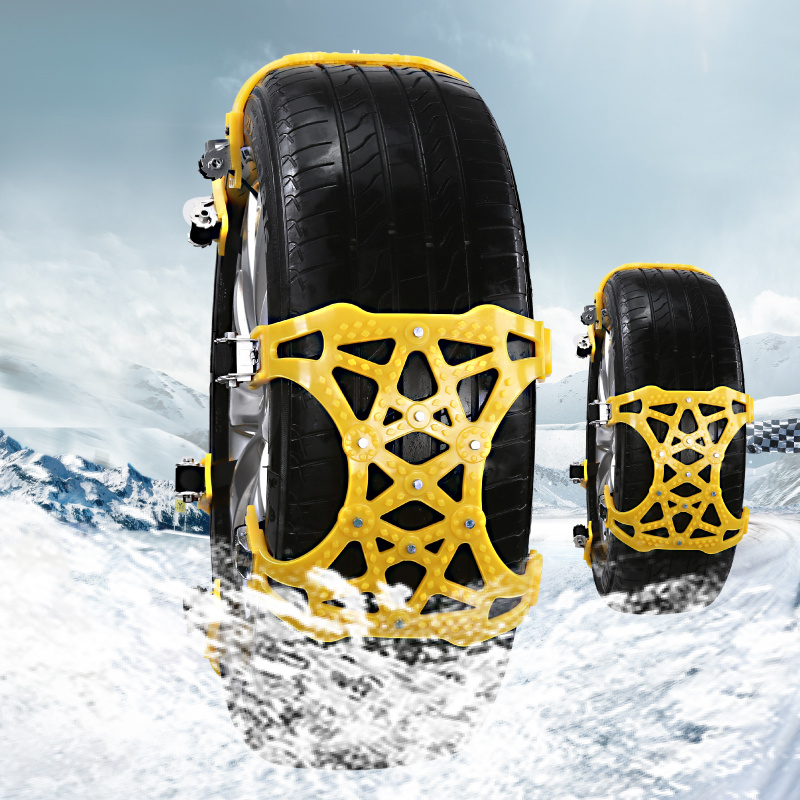 They’re an economical choice for light-duty and emergency use. -
They’re an economical choice for light-duty and emergency use. -Practice installing beforehand
Don’t wait till you’re in trouble and standing in freezing temperatures to try putting chains on your tires for the first time. Make yourself familiar before you need them by reading mounting instructions and attempting an installation on dry ground.
Always pre-fit tire chains before use to ensure correct fit. If possible, “chain up” prior to reaching poor driving conditions. Always pull your car off the road away from traffic, like into a garage or parking lot. Lay the chain on the ground, remove twists or kinks, and check for signs of damage.
Drape the chain relatively centered over the top of your tire, straightening it out to evenly distribute over both sides of the tire. Drive forward a few feet to expose the rest of the wheel that was previously touching the ground, and secure the chain squarely on the remaining surface.
Depending on the style, tighten as instructed. After moving forward about 100 yards, stop and inspect the chains for correct tension and fit. Re-tension if necessary or if the chain starts to hit the wheel well. However, too much tension can lead to tire damage, wheels spinning, and increased chain wear.
Shop our entire selection of tire chains, or call and talk to one of our sales experts at 866-348-3473. We can find just about any size you need.
We can find just about any size you need.
About US Cargo Control
Founded in 2005, US Cargo Control is a trusted leader in the cargo control industry, specializing in professional rigging and lifting equipment, trucking and transportation tie downs, and moving supplies. With a superior online shopping experience, industry-experts available via phone, and a central Midwest location, USCC is dedicated to getting you what you want, when you need it. For more information, visit www.uscargocontrol.com
October 5, 2022 | By John Beye
Share now:
Support us! GearJunkie may earn a small commission from affiliate links in this article. Learn more.
We found the best tire chains for snow to help improve your traction control when the roads and weather demand it.
While there are plenty of risky — and fun — activities to do during the winter months, icy roads undeniably present one of the greatest dangers of the season.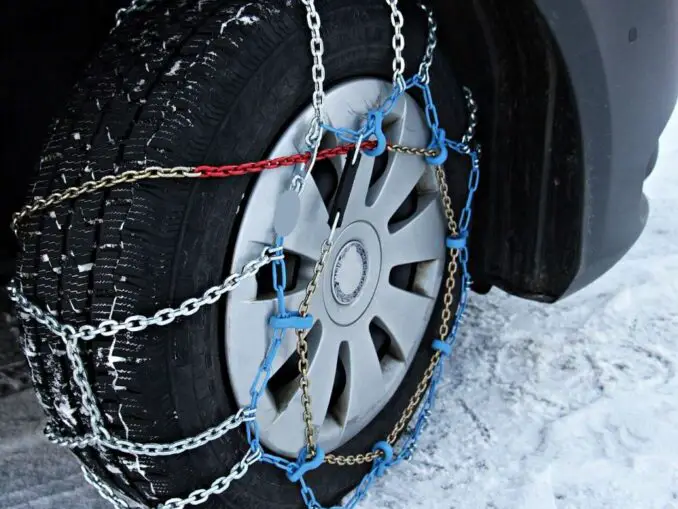 Tire traction chains are a time-tested way to improve your grip on slick roads.
Tire traction chains are a time-tested way to improve your grip on slick roads.
It’s also worth noting that special winter tires are highly recommended in the snowiest and most mountainous environments. And no matter where you are, there are certain things to avoid when driving in winter. Beyond safe driving practices, it’s also wise to keep a winter driving emergency kit in your vehicle for worst-case scenarios.
Of course, the ultimate goal is safe winter travel in all conditions, and buying the best snow chains available for your vehicle is an excellent way to ensure this. If you are new to purchasing tire chains, be sure to check out the buying guide and FAQ toward the end of this article.
Scroll through to see all of our recommended buys, or jump straight to the category you’re looking for with these links:
Security Chain Company has been in the tire chain business for a while and has worked tirelessly to perfect its art.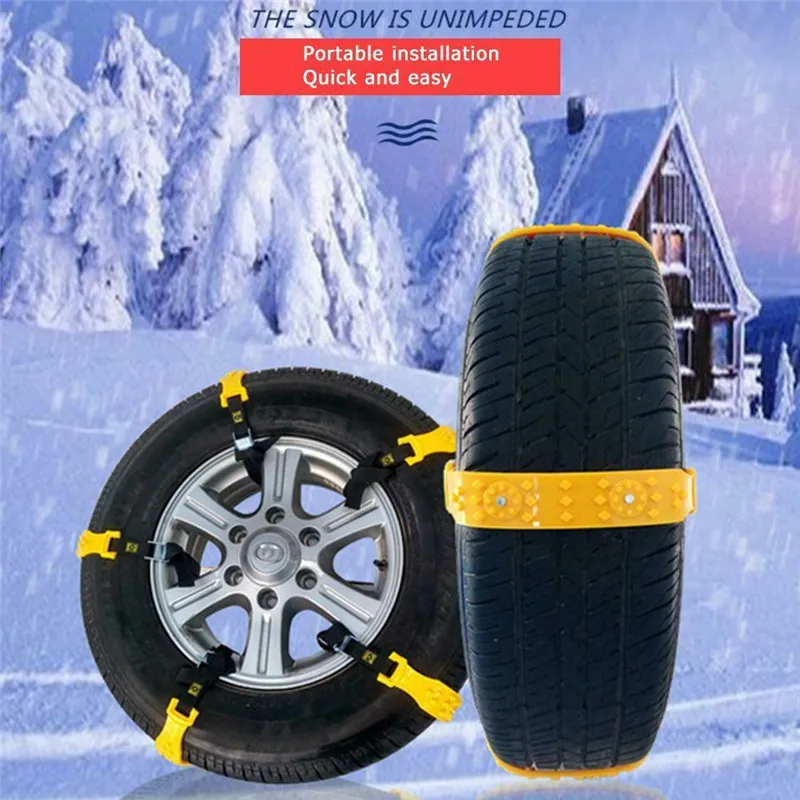 The SZ143 Cable Tire Chain ($153) is the product of years of tinkering and seeking perfection in manufacturing. As such, they’re some of the best cable tire chains on the market.
The SZ143 Cable Tire Chain ($153) is the product of years of tinkering and seeking perfection in manufacturing. As such, they’re some of the best cable tire chains on the market.
The SZ143 Cable Tire Chains boast a utilitarian design and can be used on passenger cars, SUVs, and trucks alike. The low profile of these chains allows them to sit comfortably in virtually all wheel wells. So, clearance between the tire and the car body is rarely ever a problem.
Of course, the primary reason to buy chains for your car is traction, and the SZ143 from Security Chain Company provides some of the best traction available for cable-style chains. The all-embracing cable system is an improvement over traditional styles and provides traction across your entire tire. Plus, the rubber tightening device ensures that they’ll fit snugly and not fall off while driving.
For many people, one of the most intimidating things about buying snow chains is installation.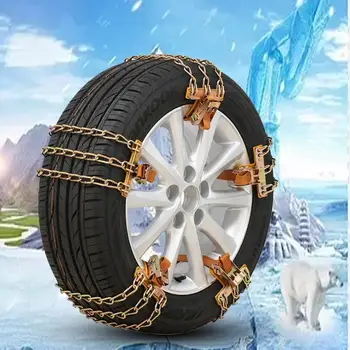 The SZ143 has addressed this, and many users have noted its relatively easy installation design. If you’re looking for a cable chain system that provides ample traction, is relatively easy to install, and can work on most vehicle types, then look no further than the Security Chain Company SZ143.
The SZ143 has addressed this, and many users have noted its relatively easy installation design. If you’re looking for a cable chain system that provides ample traction, is relatively easy to install, and can work on most vehicle types, then look no further than the Security Chain Company SZ143.
Check Price at Amazon
If you’re searching for tire chains with a more classic chain link design, consider what Peerless has to offer. The Peerless Auto-Trac chain ($134) fits light trucks and passenger cars, and ease of installation is certainly its crowning feature.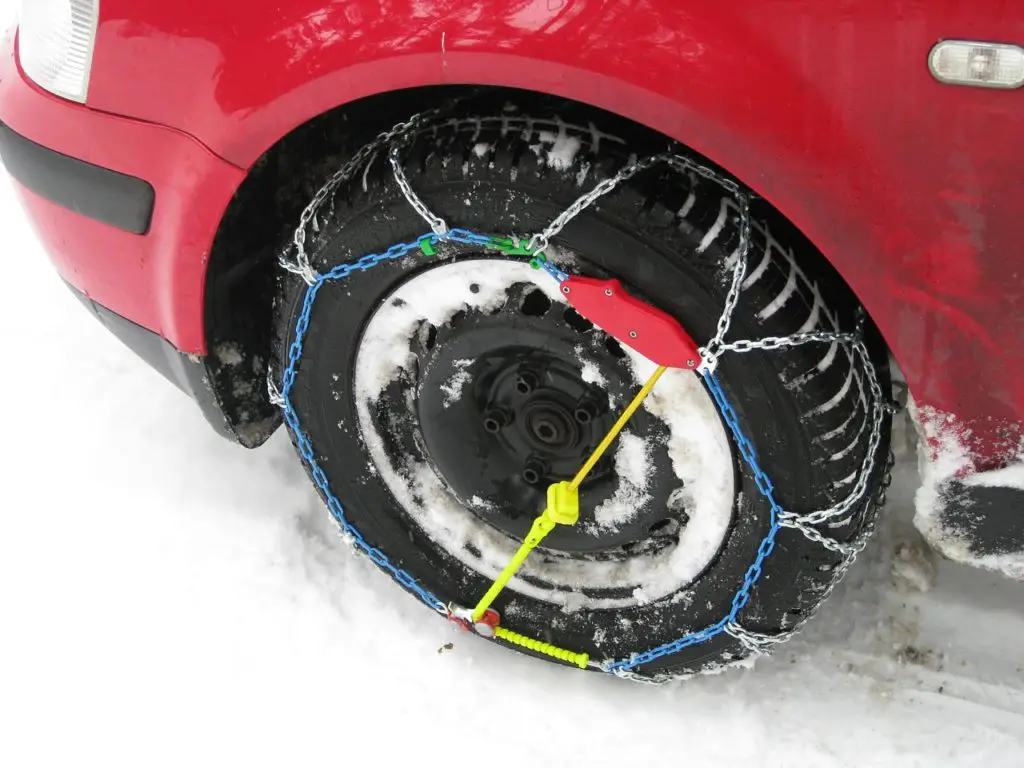
Many users will argue that of all the chains on the market, Peerless Auto-Trac tire chains are the easiest to install. To properly install other tire chains, users were often required to lift their vehicles on a jack. Not with the Auto-Trac!
The ratcheting system on these chains automatically tightens them to your tires when you start to drive. In general, simply connect the internal cables and exterior tighteners, double-check the fasteners, and hit the road.
The durability of the Peerless Auto-Trac chains is also worth noting. The manganese alloy steel construction promotes overall strength and lifespan.
With the added strength provided by the steel alloy material, the chains can be narrower and lighter than comparable models. In turn, this construction style increases the tires’ grip and creates more surface area for increased traction on the road.
While you will undoubtedly feel the rumble of any chains on your tires, the Peerless Auto-Trac diamond design makes for a smoother ride compared to many other chain styles.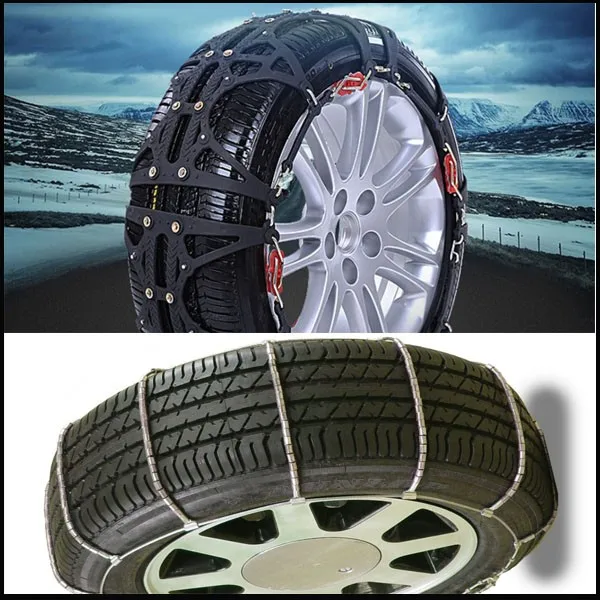 If you would prefer cables to traditional chains, check out the Peerless Super Z6 for a comparable alternative.
If you would prefer cables to traditional chains, check out the Peerless Super Z6 for a comparable alternative.
Check Price at Amazon
For those in the market for a simple yet elegant chain that also happens to be budget-friendly, look no further than the König CB-12 tire chains ($52). König tire chains are not particularly flashy, but they don’t have to be. Their simple design is time-tested. And König’s lack of revolutionary features is one of their biggest draws.
Despite being simple in concept, the König CB-12 chains are heavy-duty enough for the snowiest of climates. Many mountain drivers gravitate toward König, as they have long proven their ability to make steep and scary drives over icy mountain passes easier to manage. The surface they cover on your tires allows for a smooth ride on snow while also limiting rumbles when passing over exposed asphalt.
Given their traditional design, these chains are relatively simple to install. Similar to the Peerless Auto-Tracs, you do not need to jack up your car to install these traditional-style chains. While the König CB-12s have a manual tensioning system, it’s both effective and easy to learn. As a bonus, these chains come with a mat to kneel on when installing them in the harsh winter environment.
While they’re high-quality and simple, they do not meet Class S requirements. They will not work on all cars — particularly those with less clearance in the wheel well.
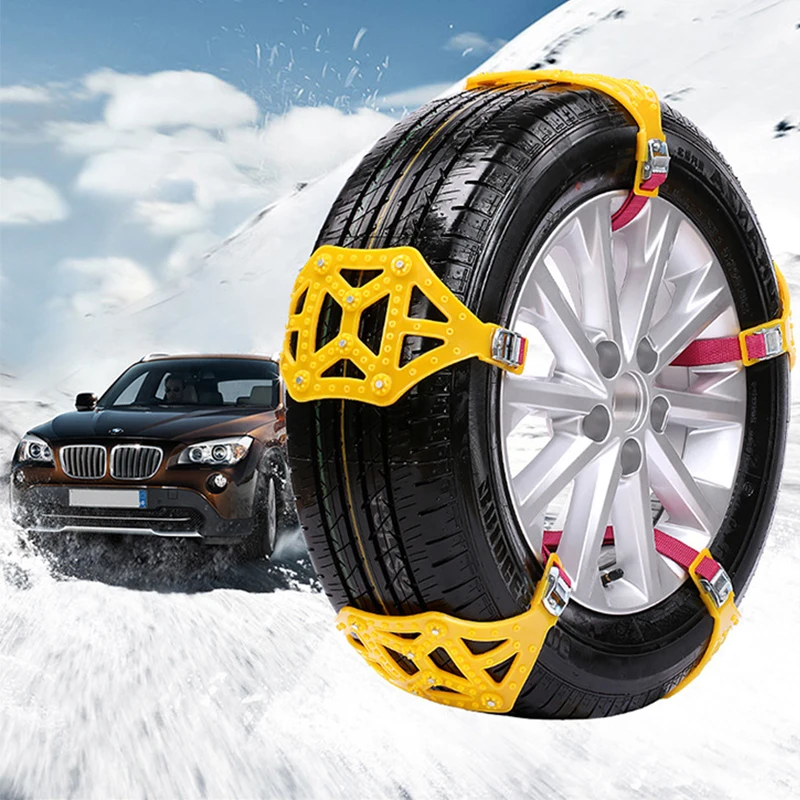 89 lbs.
89 lbs.Check Price at Amazon
Relatively new to the market, the ISSE Shark Snow Sock ($99) is a tire traction device for those looking to move away from the fuss of fighting with snow chains. Chains certainly serve their purpose and have for decades.
However, some people are put off by having to untangle them if they’re not stored correctly, the installation process when it comes time to use them, or the rumble they create while driving. The Snow Sock is here to address those problems.
The ISSE Shark Snow Sock covers your entire tire and is made of a polyolefin fabric that, like chains, is not meant to be driven faster than 30 mph.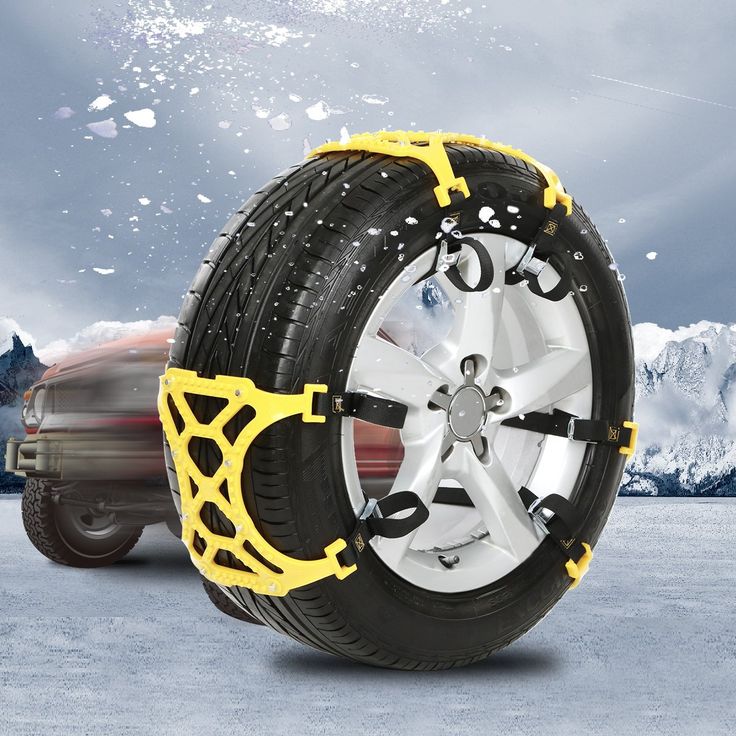 The flexibility of the fabric, low-profile design, and variety of sizes allow Snow Socks to fit virtually all tires from small passenger vehicles to large trucks.
The flexibility of the fabric, low-profile design, and variety of sizes allow Snow Socks to fit virtually all tires from small passenger vehicles to large trucks.
For those concerned about installation, the ISSE Shark Snow Socks are incredibly easy to get on your tires. Once installed, you won’t experience the rumble and vibration commonplace with all other chain styles. Because they’re made of fabric, there’s no risk of damaging your vehicle, which can be a concern with some tire chain styles.
While the Snow Socks may not look as rugged as chains, they provide excellent traction in the same demanding and dangerous snowy conditions. Because some areas prohibit the use of snow chains, the ISSE Shark Snow Socks are an outstanding legal workaround to provide added traction where chains are not allowed.
Check Price at Amazon
AutoSock Review: This textile alternative to chains has been used in Norway for a few years to improve traction on icy and snowy roads. We gave it a test. Read more…
We gave it a test. Read more…
While many snow chains are made from thick and bulky chain links, the Glacier 1046 Passenger Cable Tire Chains ($44) are made of relatively thin hardened steel rollers. The resulting low-profile fit is ideal for small passenger vehicles with limited wheel well clearance.
Despite the simple construction and minimalist design of these snow chains, they perform quite well and manage to meet all state requirements for tire traction devices. As an added bonus, the Glacier 1046 traction cables are less likely to cause damage to your vehicle and void its warranty.
When not in use, these tire cables are much lighter and easier to pack away than conventional heavy-duty chains. While we don’t recommend these cables for heavy-duty or long-distance use, they’re a handy and convenient option for small passenger vehicles when the weather turns snowy.
Check Price at Amazon
The Security Chain Company is well known for its wide variety of high-quality snow chains. From small passenger vehicles to trucks and SUVs, the company has a purpose-made chain model to fit the bill.
The QG2228CAM Quik Grip Model ($177) is a robust chain made to withstand the weight of tough 4×4 trucks. Long-wearing square link cross chains ensure maximum long-term durability. Built from manganese alloy steel, these chains are grippy and reliable on just about any surface. There are multiple sizes available to suit trucks of all sizes.
Thanks to a built-in CAM tightening system, additional tensioners are not required for installation. Most users find these chains to be relatively easy to install, although the first attempt will likely involve some troubleshooting. Fortunately, a clear set of step-by-step instructions are included.
Check Price at Amazon
Soyond Snow Chains ($33) are an excellent and unique choice for the budget shopper. If you live somewhere where snowy weather is not a common occurrence or rarely drive over icy mountain passes, consider the highly affordable Soyond Snow Chains.
At first glance, the Soyond Snow Chains look completely different from other competitors on the market. But the unique construction serves a purpose. The hollow design eliminates snow buildup on the tires while simultaneously promoting traction on slippery roads.
But the unique construction serves a purpose. The hollow design eliminates snow buildup on the tires while simultaneously promoting traction on slippery roads.
The thermoplastic polyurethane plates prevent harm to both tires and the road. Each plate is reinforced with steel studs for added grip and friction on the iciest of roads. These studs can also efficiently break down icy surfaces as you drive over them.
Installation of the Soyond Snow Chains is straightforward. Just pull each strap taut as you attach it to the tire. Like the Snow Sock reviewed above, these chains are easy to store without tangling and can be put on the desired tires without moving the vehicle.
With proper sizing, these chains can work with most vehicle types — from the smallest sedans to the most imposing trucks. Avoid the Soyond Snow Chains if your car or truck has a steel or iron wheel hub, as either has greater potential to cut through the ribbon at its attachment point. Each order includes six chains, one snow scraper, a pair of nylon gloves, and a wrench to assist in installation.
Check Availability at Amazon
Like any other piece of outdoor gear, the closer you are to purchasing, the more little details emerge that differentiate one product from the next. Choosing the best snow chains for your specific situation is especially important. It can spell the difference between a safe commute and getting into an accident on an icy road.
When deciding between different styles of snow chains, here are a few essential things to consider.
Many modern, higher-end chains on the market offer self-tensioning technology, which can help the installation process.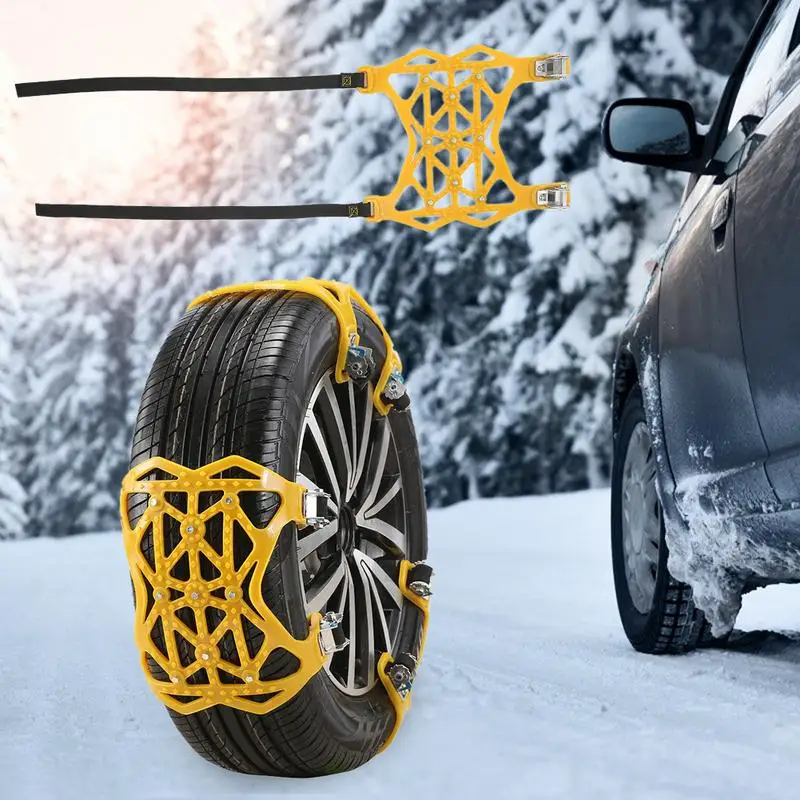 As the vehicle moves and the tires rotate, self-tensioning chains will center and adjust with built-in ratchets.
As the vehicle moves and the tires rotate, self-tensioning chains will center and adjust with built-in ratchets.
In turn, this eliminates excess slack in the chain, which increases their overall performance on the snow. If you anticipate using your chains often, self-tensioning chains are the way to go.
There are plenty of assisted tensioning and manual tensioning chains on the market, as far as other options go. These chains are often more affordable and easier to install initially.
However, they require drivers to retighten them after they begin to drive. In cold and snowy conditions, self-tensioning chains can minimize the amount of time spent kneeling on the side of the frozen road.
Before fully committing to either manual or self-tensioning chains, be sure to put some critical thought into the pros and cons of each as they pertain to your particular vehicle location.
Many premium tire chains include an automatic release.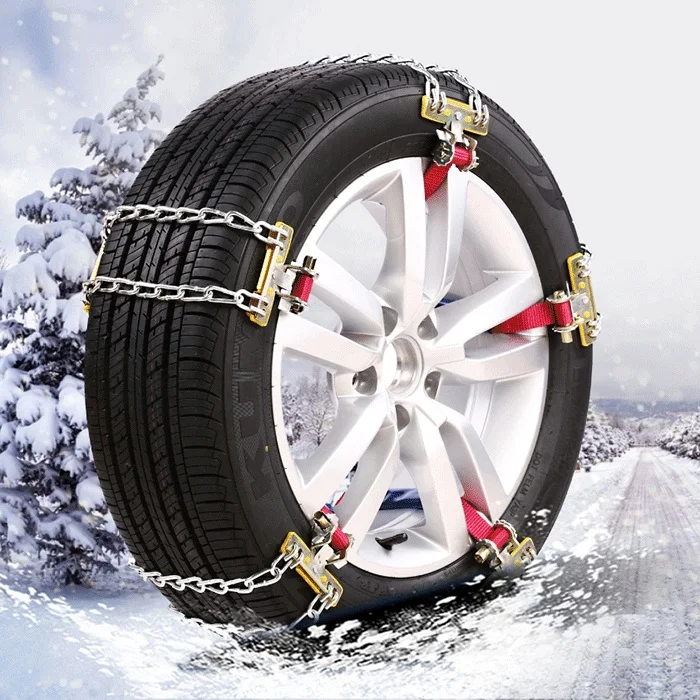 If you drive over big mountain passes with variable snow conditions or cover many miles that may require chains, the automatic release function can be beneficial.
If you drive over big mountain passes with variable snow conditions or cover many miles that may require chains, the automatic release function can be beneficial.
An automatic release can significantly decrease the amount of time you spend manually removing your chains while exposed to cold and potential hazards on the side of the road.
No matter what style of chain you choose, it’s imperative to purchase the correct size. This is critical for the chains to fit appropriately and function as designed.
Thankfully, it’s easy to identify your tire size. It should be printed on the tire sidewall — giving dimensions for tire width, height ratio of the sidewall compared to width, and diameter.
Don’t worry too much about the size specifics. All you need to do is match the overall number to the model number provided by the chain manufacturer. On this list, all of the chains we’ve recommended are available in many different sizes.
(Photo/Tom Reynolds)Tire traction chain technology has evolved over the past few decades. Some classic materials are still being used, and some newer innovations have been introduced to the market.
Some classic materials are still being used, and some newer innovations have been introduced to the market.
Generally speaking, higher-end metal chains are constructed with manganese, titanium, and nickel steel alloys. This offers superior strength and durability. If you drive a large truck or any kind of heavy-duty vehicle, we recommend chains made with extra burly materials. Middle-of-the-road and economy chains are generally made of hardened steel.
While metal chains typically provide more traction control than alternative materials, they can also cause more damage to roads and vehicles. To combat this, the industry has introduced rubber chains and snow socks. While they may not be the best choice for extreme environments, they’re certainly more friendly to your vehicle and the roads you drive on.
As you shop around for the right set of tire chains for your vehicle, you’ll notice differences in weight. Lighter chains will provide adequate traction and better fuel economy. And they’re easier to install, remove, and store.
And they’re easier to install, remove, and store.
While worse for overall fuel economy, heavier chains will provide much better friction and are usually more durable. Heavier chains are more cumbersome to transport, carry, and store than the lighter-weight alternatives.
Seeing as you will likely not be driving for more than a few miles at a time with chains on your tires, don’t get too worked up about fuel economy. Similarly, if you’re buying chains merely as an added winter driving precaution and don’t plan on using them often (or perhaps at all), don’t invest in the heaviest option. Regardless of your choice, safety should always be your top concern.
(Photo/George Wesley & Bonita Dannells)Installing snow chains truly is a practice-makes-perfect type of skill. And every brand and style of the chain will install slightly differently. Each set of chains comes with a specific set of instructions, and there is a general method that all drivers should follow.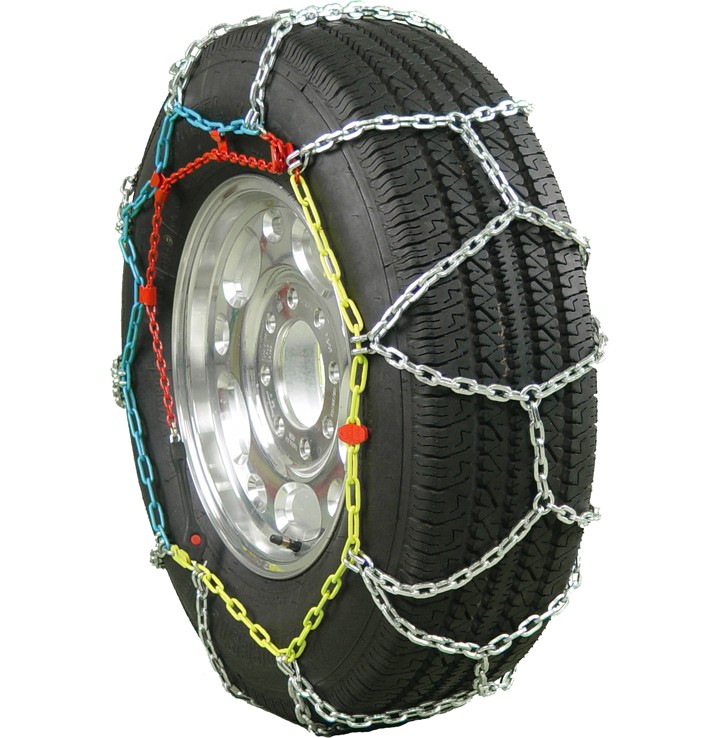
First and foremost, purchase the correct size chains for your vehicle. Ensuring that your chains are the correct size will prevent excessive frustration during installation. Once you have your chains in hand, we highly recommend that you practice installing them in dry and favorable conditions.
It will be much easier to throw on your chains in a subzero blizzard on the side of the highway if you’ve practiced! The more practice, the better.
As you make a plan to store your chains in your vehicle, build a quick winter emergency kit to go with them. If you get caught off guard and need to put chains on, it’s nice to know you have a set of gloves, a spare coat, a headlamp, and something to kneel on ready in your car.
When the time comes to install your chains, pull off to the side of the road. Make sure you bundle up in winter layers, put on your four-way flashers, and safely move to your targeted tires.
For front-wheel-drive vehicles, install snow chains on the front tires. And for rear-wheel drives, they will go on the back. If you have an all-wheel or 4WD vehicle, the chains will likely work best when installed on the front tires, but check the owner’s manual to be sure.
And for rear-wheel drives, they will go on the back. If you have an all-wheel or 4WD vehicle, the chains will likely work best when installed on the front tires, but check the owner’s manual to be sure.
From here, all installations will differ slightly. It’s best to follow the instructions for your particular set of chains.
In general, you’ll unpack them, untangle them, and start wrapping them around your tire — attaching the connection points where appropriate. Repeat this process for both tires.
Once the chains are attached, you can slowly drive forward 10 to 20 feet to allow the chains to settle. If you do not have self-tensioning chains, get out, and tension them yourself to remove any slack. After you’re confident they are attached tightly and correctly, slowly pull onto the road and begin your drive.
It’s normal to hear and feel a slight rumble with most chains, but you should stop driving immediately if you hear any loud noises. Unusually loud noises or physical jolts can indicate your chains are not tight enough and are knocking against your wheel well. Pull over safely and readjust them.
Pull over safely and readjust them.
Like all pieces of outdoor gear, the correct answer is usually personal. Examining differences in things like material, link patterns, weight, style, and price allows you to make the most informed decision regarding the best snow chains for your situation.
If you anticipate frequently driving in bad road conditions and using your chains often, invest in a higher-end, more heavy-duty model. But if you’d just like to have a set of chains to keep in your car just for emergency purposes, maybe a more budget-friendly option will suffice.
Ultimately the decision is up to you, as each snow chain on the market has its own set of pros and cons.
Several alternatives to snow chains might work best for your vehicle, lifestyle, and the degree of winter conditions you expect to encounter. Tire straps are an easy-to-use traction device over snow chains. They strap on similarly to snow chains but have more flexibility. Appropriate for cars, crossovers, and other small to medium-size vehicles. Install them over the tires when you travel in snow or need extra traction on muddy, sandy, or rocky terrain.
They strap on similarly to snow chains but have more flexibility. Appropriate for cars, crossovers, and other small to medium-size vehicles. Install them over the tires when you travel in snow or need extra traction on muddy, sandy, or rocky terrain.
Snow socks are better than snow chains for some people because they won’t damage your vehicle, and installation is more straightforward. Another advantage is that the ride is quieter without the vibration and rumble of bulkier traction devices. Snow socks over tires are recommended for short-term use and low-speed driving.
Snow socks can be a good alternative to snow chains in certain situations. In general, snow socks do not provide the same level of traction as traditional chains.
Snow sock fabric wears down more quickly than durable metal chain options. That said, snow socks are a great option for folks who don’t plan on regularly driving in the most demanding winter conditions.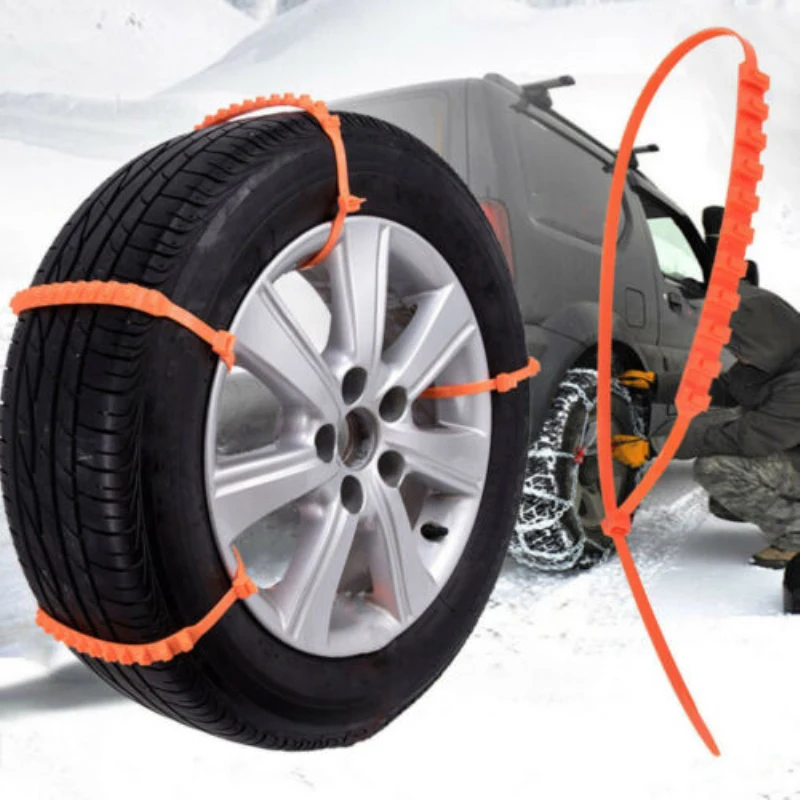
Further, some vehicle manufacturers strongly suggest drivers do not use snow chains on certain models of vehicles. This is often an issue with low tire clearance, and snow socks can be a good remedy for this. They may not provide the same level of traction as metal chains, but snow socks are better than nothing for cars that cannot safely handle the increase in volume created by chains.
There is the possibility that snow chains can mess up your car. However, they’re all designed to avoid such a negative outcome. In most cases, the responsibility falls on the installer or driver when cars get damaged by tire chains.
Snow chains need to fit your tires properly. If they don’t, damage to your wheel wells may occur while you’re driving. Additionally, if not installed in the correct manner, they can come loose and damage the underbody. When putting on your chains, check and double-check they are installed tightly and correctly.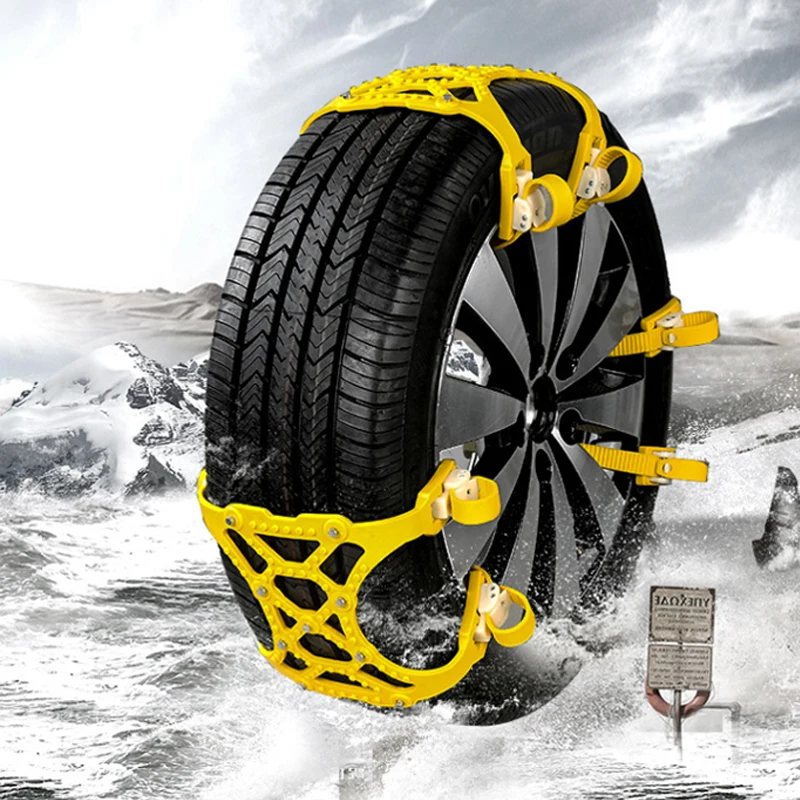
All chains come with a driving speed recommendation — usually around 30 mph. Exceeding the recommended speed can break the chains and cause further damage to your vehicle. When driving with chains on your tires, be extra cautious if you’re passing over areas of bare pavement.
While the best tire chains for snow can cause damage, they’re engineered for traction and safety. If you install them as instructed and heed the manufacturer’s advice, snow chains shouldn’t cause you any trouble. If you’re concerned, consider snow socks as an alternative traction device.
Definitely use the best tire chains for snow on all four corners with all-wheel drive and four-wheel drive vehicles. In the case of FWD and RWD cars and crossovers, it’s much safer and easier to control if you have snow chains on all four tires. You can make do by installing them on the drive axle wheels.
Although, the significant difference in traction will cause oversteer in front-wheel drive vehicles and understeer in rear-wheel drive cars.
While the design of snow chains works best in packed snow or ice, they can also help in muddy situations. It’s not uncommon to lose traction when tire treads get packed with foreign material — snow, ice, or mud.
Chains act as an additional traction device and allow for more friction. Some snow chains translate better to mud than others, and individual manufacturers sometimes declare their chains’ effectiveness in the mud.
Don’t approach winter driving lightly. Thankfully, there are plenty of tools out there to help you navigate snowy and icy roads with safety and relative ease. Snow tires are a great asset in wintry, mountainous environments, but replacing a full set of tires is expensive.
While you may not need them, snow tire chains are a great tool to keep in your car when conditions get especially rugged.
No matter the destination, every winter driver needs to be prepared if something goes wrong. These are the essentials for a winter emergency car kit. Read more…
These are the essentials for a winter emergency car kit. Read more…
Autumn brings a familiar crisp to the air and a chill to our hands. Investing in the best hand warmers for the upcoming winter season will help you make the most of a day outdoors, no matter the conditions. Read more…
Read More Best-Of Articles Learn More About Licensing & Permissions
Share now:
(
Updated:
28/01/2022
)
Article content
Passability of the car on a snowy or icy track does not always depend on the installed rubber.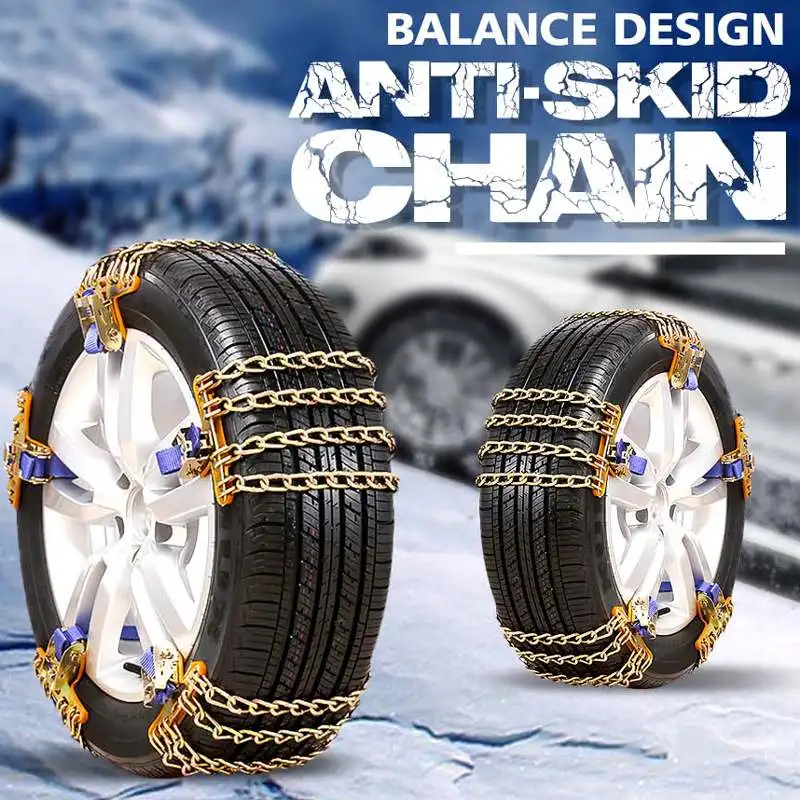 There are sections of roads that will be too tough for studded sets or tires with tenacious Velcro. A winch, a shovel or prepared tires will help to overcome such places by car. In a situation where there is nowhere to wait for help, special anti-skid equipment for wheels will help out. Among the popular accessories are chains and bracelets that improve the maneuverability of any car.
There are sections of roads that will be too tough for studded sets or tires with tenacious Velcro. A winch, a shovel or prepared tires will help to overcome such places by car. In a situation where there is nowhere to wait for help, special anti-skid equipment for wheels will help out. Among the popular accessories are chains and bracelets that improve the maneuverability of any car.
You can increase the patency of standard wheels by installing additional systems on the tread. Properly selected lugs increase the car's traction on ice and snow, which makes it easy to overcome difficult obstacles even on mono-wheel drive vehicles. Anti-slip chains and bracelets are suitable for vehicles with any ground clearance and wheel radius. Thanks to deep penetration into the ground and high contact pressure, special equipment ensures confident progress of the machine on any road.
It is wrong to choose which anti-skid accessory is better and better, because they are installed to improve flotation.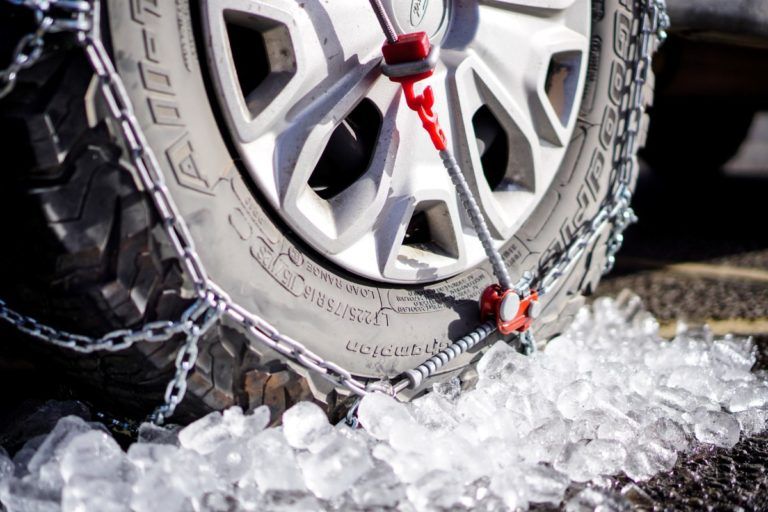 Chains and car bracelets - a set with a pronounced tread that is correctly used on driving wheels. They must be selected taking into account the size of the wheel, the width of the tread and the diameter of the tire.
Chains and car bracelets - a set with a pronounced tread that is correctly used on driving wheels. They must be selected taking into account the size of the wheel, the width of the tread and the diameter of the tire.
Despite their similar qualities, chains and anti-skid bracelets are used in different road conditions. Since the chains have a complex fastening mechanism, cover the entire area of the tire, and are also assembled from hard or soft materials, it is customary to install them on a car before long off-road trips. They allow you to comfortably move on an icy track, loose snow or soil. The only restriction is in the speed of movement, which is reduced to 50 km / h.
Anti-skid bracelets should be chosen by car enthusiasts who drive mainly on cleared roads and only occasionally overcome difficult sections of the road. Such a kit has a removable mechanism, which is convenient to use one-time - put and remove the accessory immediately after going off-road. They show themselves better at short distances, are not suitable for long trips, as they lead to vibration on the steering wheel, an increase in fuel consumption.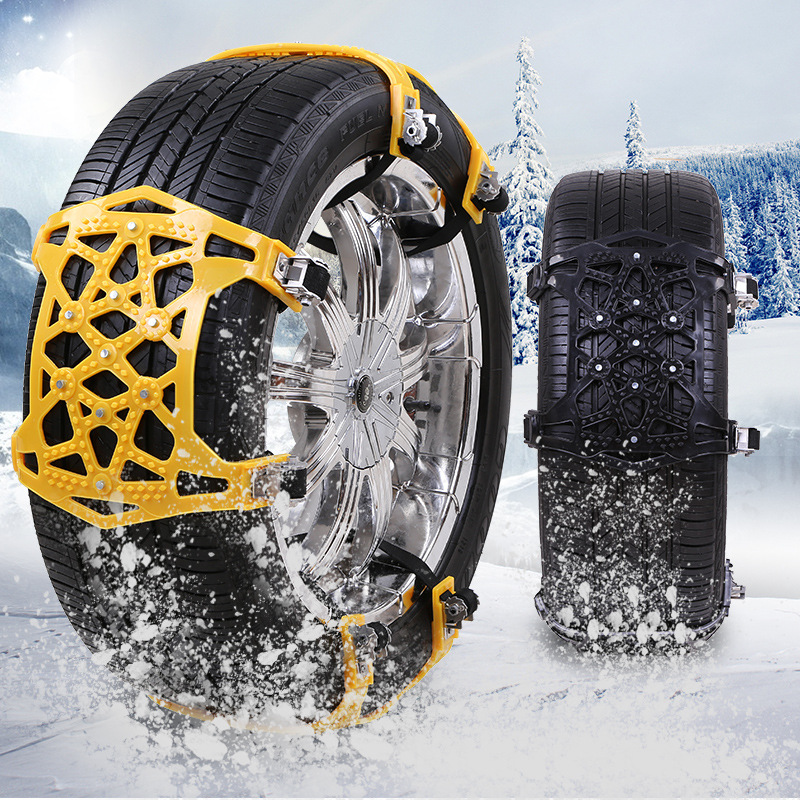
The structure, which consists of many chains woven into a single network, completely covers the wheel. It is attached to the cuffs in the form of elastic straps. The straps do not deform the disc and securely fix the chains. Off-road products are assembled from metal alloys, as well as reinforced plastic links. This range allows you to choose a model for the operating conditions:
To select chains with good traction and grip, decide which hitch structure is right for you.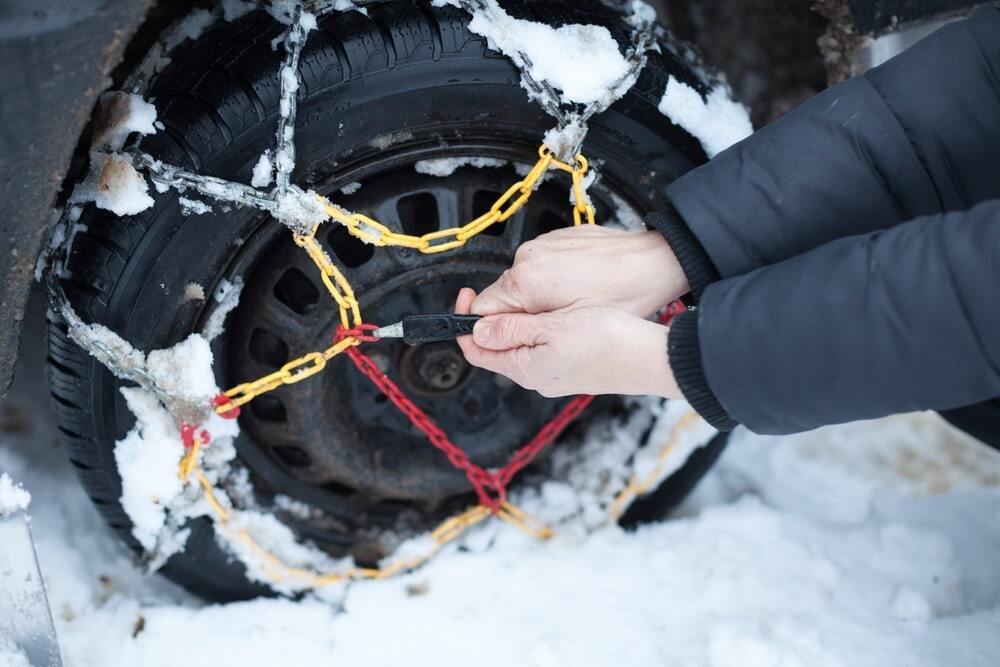 Popular ways of weaving a short flight of stairs and a rhombus. The first model is not recommended to be installed on the drive axle. It provides good traction, however, due to the uneven pattern, it makes the wheels twitch when slipping. Rhombus is better suited for comfortable rides. It provides a smooth ride of the machine and good handling.
Popular ways of weaving a short flight of stairs and a rhombus. The first model is not recommended to be installed on the drive axle. It provides good traction, however, due to the uneven pattern, it makes the wheels twitch when slipping. Rhombus is better suited for comfortable rides. It provides a smooth ride of the machine and good handling.
The size of the chain link affects the grip, life and wear of the tire. Narrow chains deform tires less, but behave worse off-road. The large link provides a good grip. However, it will not work all the time to use it - the rubber will quickly become unusable.
Winter
Tires Goodyear UltraGrip Cargo
Winter Drive Protection Sound Comfort
Rating:
4.5
Tires Goodyear UltraGrip Ice 2
Winter Drive Protection Sound Comfort
Rating:
4.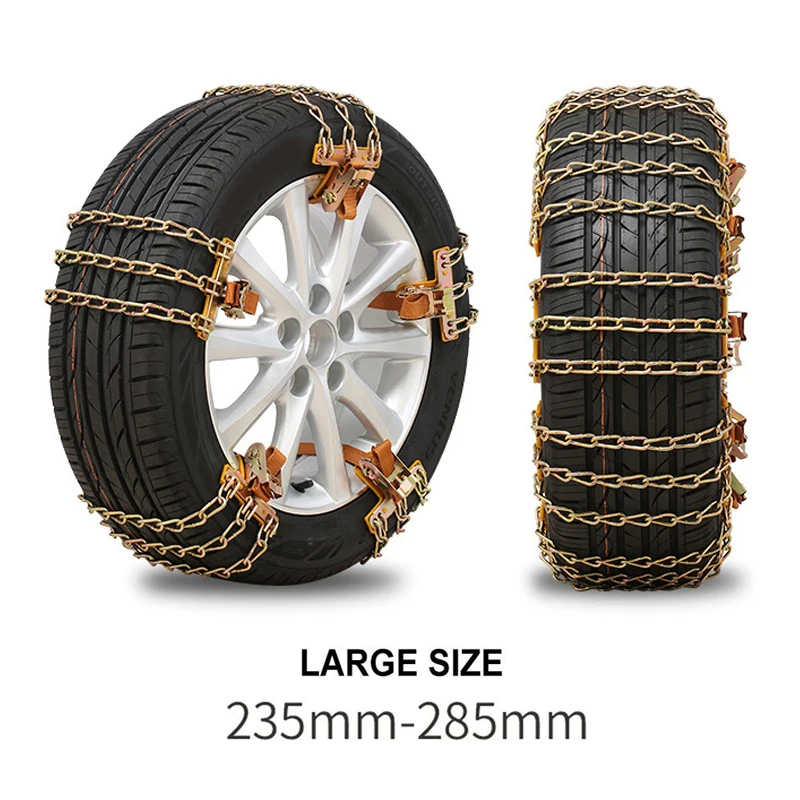 5
5
Tires Goodyear UltraGrip Ice SUV
Winter Drive Protection
Rating:
4.5
Tires Goodyear UltraGrip Ice +
Winter Drive Protection
Tires Goodyear UltraGrip Arctic 2
Winter Drive Protection Run On Flat
Rating:
4.5
Tires Goodyear UltraGrip Performance Gen-1
Winter Drive Protection Run On Flat
Rating:
4
Tires Goodyear UltraGrip Performance 2
Winter Drive protection
Tires Goodyear UltraGrip Ice 2+
The design of the bracelet consists of a working base and a belt with a locking mechanism that securely fastens the tapes to the wheel.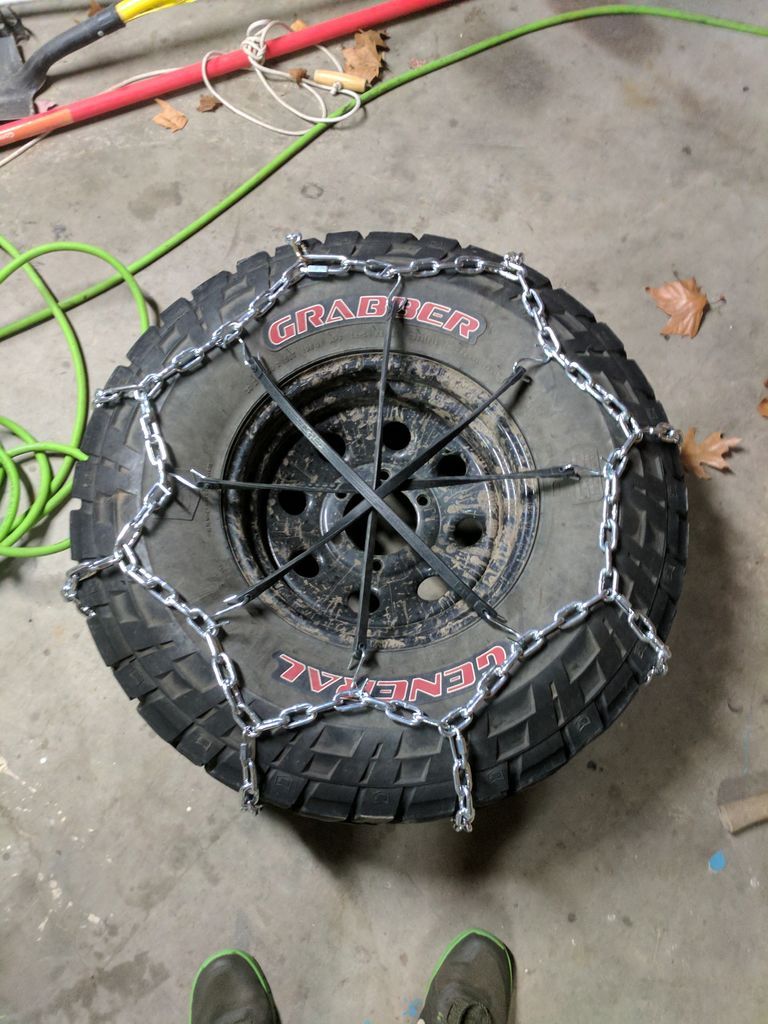 The working part is superimposed on the protector, the straps are passed between the spokes of the disk, fixed on the fasteners. If you do not make mistakes and connect the parts correctly, the pads will not damage the suspension, improve the car's patency.
The working part is superimposed on the protector, the straps are passed between the spokes of the disk, fixed on the fasteners. If you do not make mistakes and connect the parts correctly, the pads will not damage the suspension, improve the car's patency.
The anti-skid strap is mounted as a set on the drive axle. The number of belts is selected personally, reaches from 3 to 12 pieces. As a working part, a plastic and metal base is used. You don't need to remove the wheel to properly install the kit. The mechanism is suitable for passenger cars, SUVs and specialized vehicles.
It should be borne in mind that using such pads regularly is not entirely correct, since constant axle loads, vibration from belts, lead to a quick failure of the differential. Therefore, based on safety considerations, an anti-skid bracelet should only be installed to overcome an obstacle.
How to put each of the designs on the wheel, we have discussed above.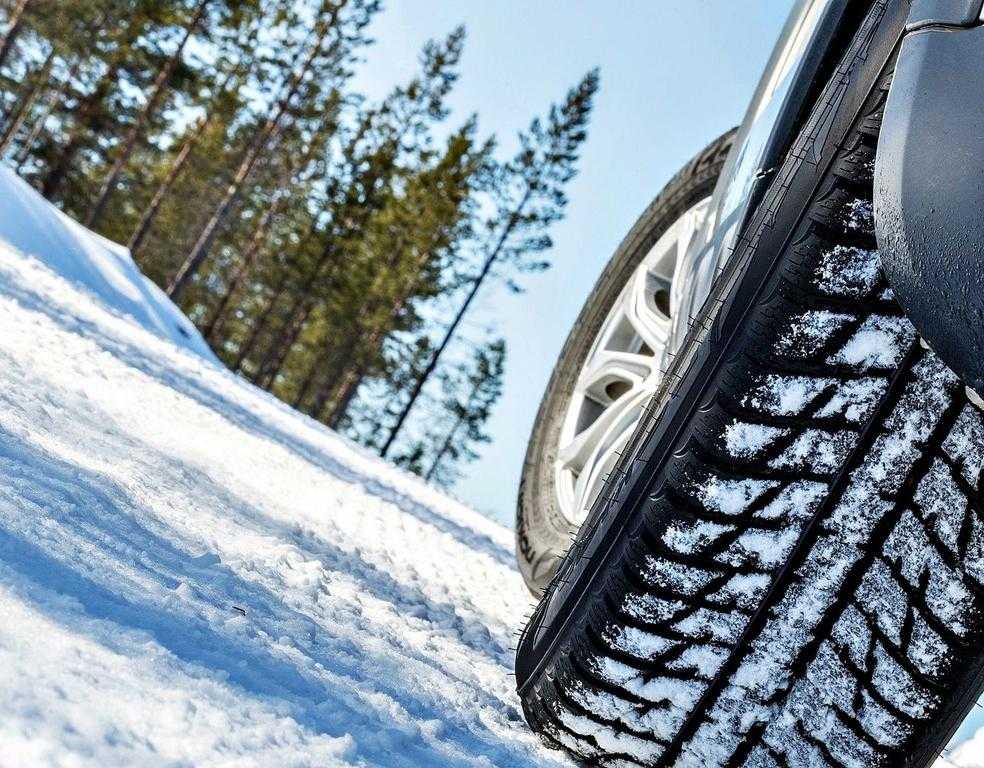 Due to the characteristics of the tread and the method of attachment, chains are more difficult to set. However, their elasticity allows you to use the kit during the entire route. The anti-skid bracelet is easier to install, but is designed for short trips, so there will be more locking cycles. The price of chains and bracelets depends on the number of grips in the set, the dimensions of the wheels. Models that are identical in terms of parameters have a similar cost.
Due to the characteristics of the tread and the method of attachment, chains are more difficult to set. However, their elasticity allows you to use the kit during the entire route. The anti-skid bracelet is easier to install, but is designed for short trips, so there will be more locking cycles. The price of chains and bracelets depends on the number of grips in the set, the dimensions of the wheels. Models that are identical in terms of parameters have a similar cost.
An important difference that affects the service life is elasticity. Since the chains have more range, motorists can choose hard or soft kits, based on the specifics of operation. Flexible tuning will ensure good traction in all conditions. The anti-skid bracelet is inferior in these parameters, so you should not choose them for traveling long distances.
When deciding what to choose for yourself - chains or friction bracelets, consider the operational potential of the models. For regular off-road trips, uneven terrain or loose snow, you need to choose chain kits.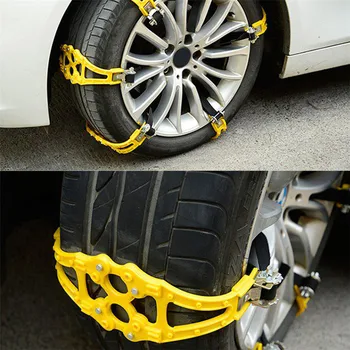 If you mainly move on cleared roads, and additional assistance is occasionally required, then the choice can be stopped on bracelets. They will help out at a critical moment.
If you mainly move on cleared roads, and additional assistance is occasionally required, then the choice can be stopped on bracelets. They will help out at a critical moment.
How to choose Goodyear tires for your car
In winter, drivers often have to drive through icy, snowy and other difficult terrain. Without additional equipment to prevent slipping, it is extremely difficult to overcome such sections of the road. Once faced with such difficulties, many motorists begin to investigate the question of how to choose chains for wheels.
The presence of winter and even studded tires is not a guarantee that the machine will pass through ice or deep snow. But a car equipped with snow chains is more maneuverable, able to overcome deep snow, mud or sand.
And if in our country car owners somehow manage with studded tires, then in Europe a wheel chain is a necessary element of car equipment, along with a first aid kit and a fire extinguisher.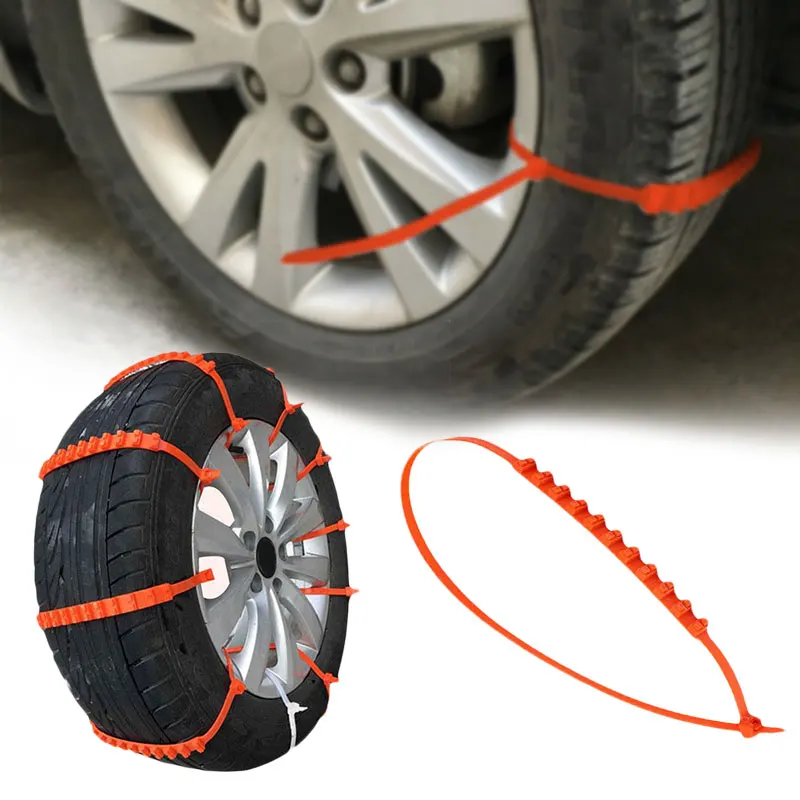 For driving without this equipment on some roads under certain weather conditions, the driver will face a substantial fine.
For driving without this equipment on some roads under certain weather conditions, the driver will face a substantial fine.
Snow chains will also be appreciated by outdoor enthusiasts (hunters, fishermen, skiers), summer residents and everyone who cares about the safety of passengers and seeks to improve driving comfort in difficult conditions.
There are several types of such equipment. To choose the right model, you should understand the differences between them:

Choose the type of equipment based on personal preferences and the tasks that it must solve.
Set usually consists of 2 pieces, matching 10-15 interchangeable sizes. As a rule, if we are talking about infrequent use and not very difficult driving conditions, the equipment is mounted only on the drive axle. An all-wheel drive car is easier to drive if all 4 wheels are “shod”.
Bracelets are another additional protective accessory that improves vehicle flotation. The design is a belt with a buckle for mounting and an anti-slip base.
The driver puts on the bracelets by passing them through the wheel disk. The set includes from 2 to 12 pieces. The more they are worn, the smoother the movement will be. Although they are easier to put on than chains, it will take more time to install several bracelets on one wheel than chains.
It is not advisable to install bracelets on a steel disc - over time it will gradually cut them.
So, if the wheel is already loaded or the driver wants to get more traction, bracelets will do. Smoother running and better handling are easier to achieve with chains with diamond weave.
Different models of anti-skid equipment differ from each other in a number of characteristics, in particular, the material of manufacture, weaving and link size. The scope of application of structures depends on these parameters. For example, for ice it is recommended to choose a model with small links. The large link is designed to move through mud or deep snow.
It is customary to distinguish two classes of equipment:
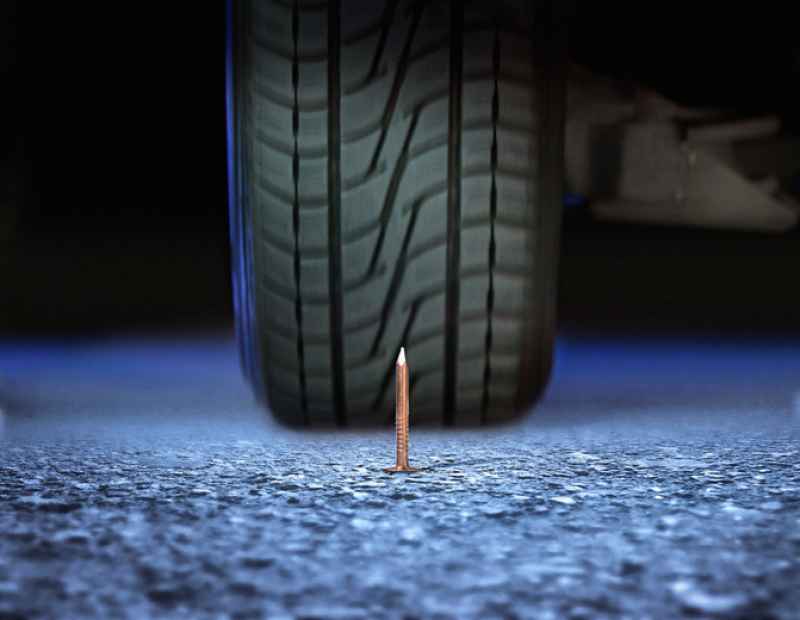 Since the rubber loses elasticity in cold weather, it is difficult to put on the mesh. The maximum permissible speed is not more than 80 km/h.
Since the rubber loses elasticity in cold weather, it is difficult to put on the mesh. The maximum permissible speed is not more than 80 km/h. The life of each product depends on the material and the conditions and intensity of use. For example, soft wheel nets usually wear out within one to two seasons. To extend the life of accessories, you should follow the manufacturer's recommendations for their use.
The grip of the wheels on the ground is achieved by means of chain mesh with different types of weaves. The most common drawings are "rhombus" (or "honeycomb") and "ladder".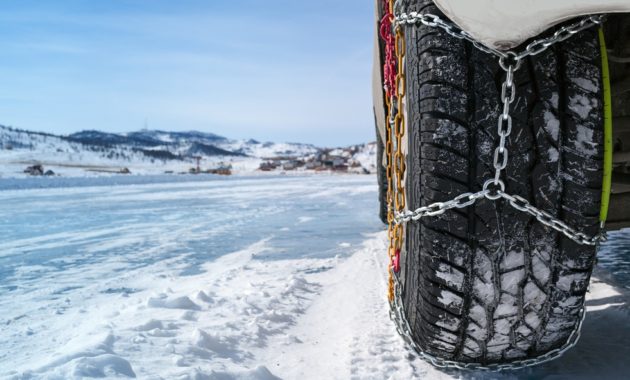
The first option performs well in case of side skids, increases the car's off-road capability without overloading the transmission and suspension. Full repetition of the shape of the wheel guarantees smooth rotation. Suitable for trucks and other large vehicles.
Ladder pattern is convenient in terms of mounting method and provides good traction potential. It is used for rectilinear movement, with side drifts it is less effective. However, jerks during wheel rotation damage the transmission, suspension and steering components. It is because of the jerks that chains with such weaving are usually mounted on non-steered wheels.
Experts pay attention to the following pattern: the more complex the weaving, the better the machine's cross-country ability.
Chain selection also depends on the link width. On some car models, only fine-mesh chains protruding above the tire surface in the range of 15 mm can be installed. It is desirable to mount 9-12 mm on cars, trucks - from 16 mm.
Narrow links perfectly follow the shape of the wheel, although wear faster on a heavy vehicle. Wide ones provide increased cross-country ability of the car, but they wear out the tire treads of a small wheel more strongly.
Before buying chains, there are some disadvantages of this type of equipment to consider. If you use it constantly, you should be prepared for increased noise, as well as stress on the suspension, steering, transmission. Also, many of the minuses include a speed limit.
The following should be taken into account even before purchase:
Please note that this equipment is designed exclusively for difficult road sections and not for continuous driving.